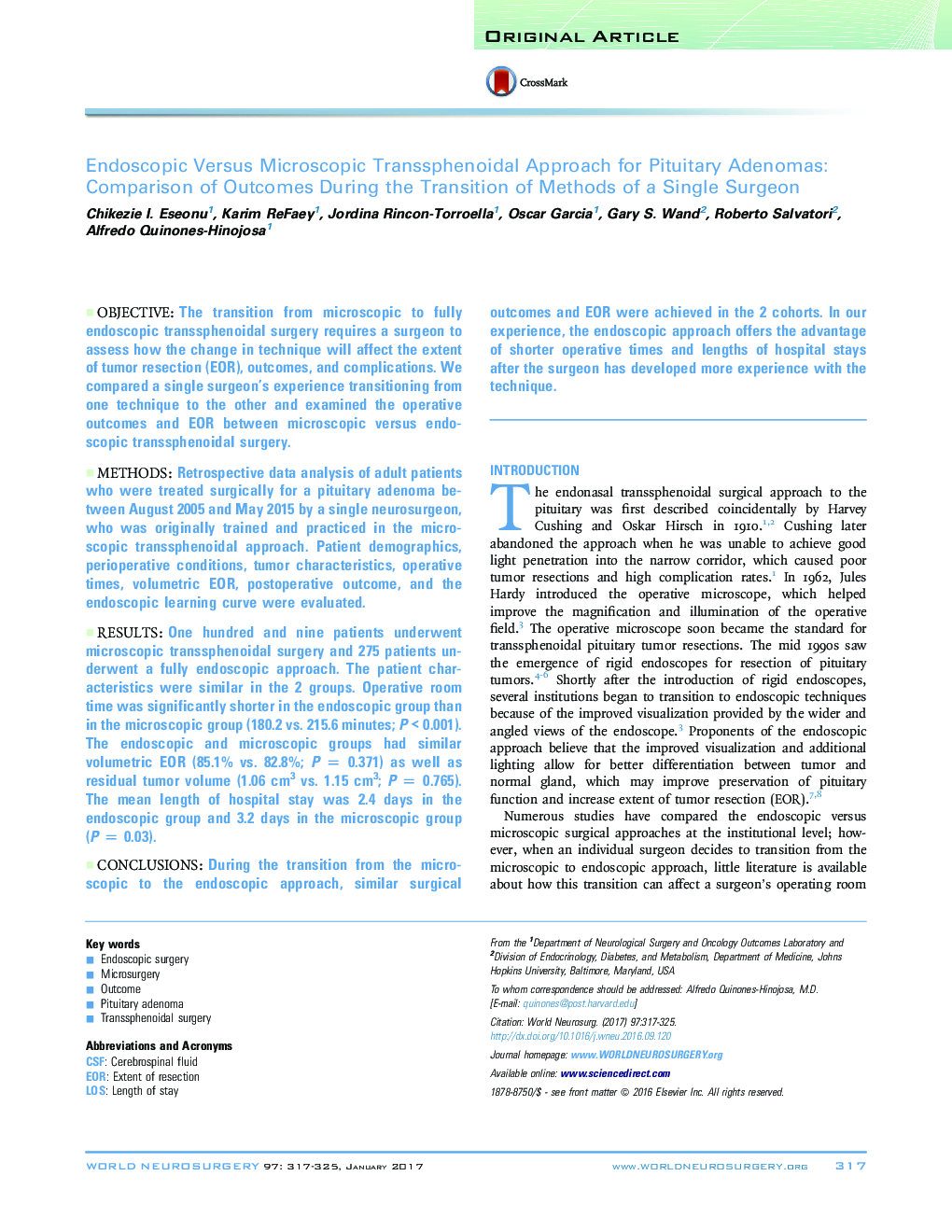| Article ID | Journal | Published Year | Pages | File Type |
|---|---|---|---|---|
| 5634725 | World Neurosurgery | 2017 | 9 Pages |
ObjectiveThe transition from microscopic to fully endoscopic transsphenoidal surgery requires a surgeon to assess how the change in technique will affect the extent of tumor resection (EOR), outcomes, and complications. We compared a single surgeon's experience transitioning from one technique to the other and examined the operative outcomes and EOR between microscopic versus endoscopic transsphenoidal surgery.MethodsRetrospective data analysis of adult patients who were treated surgically for a pituitary adenoma between August 2005 and May 2015 by a single neurosurgeon, who was originally trained and practiced in the microscopic transsphenoidal approach. Patient demographics, perioperative conditions, tumor characteristics, operative times, volumetric EOR, postoperative outcome, and the endoscopic learning curve were evaluated.ResultsOne hundred and nine patients underwent microscopic transsphenoidal surgery and 275 patients underwent a fully endoscopic approach. The patient characteristics were similar in the 2 groups. Operative room time was significantly shorter in the endoscopic group than in the microscopic group (180.2 vs. 215.6 minutes; P < 0.001). The endoscopic and microscopic groups had similar volumetric EOR (85.1% vs. 82.8%; PÂ = 0.371) as well as residual tumor volume (1.06 cm3 vs. 1.15 cm3; PÂ = 0.765). The mean length of hospital stay was 2.4 days in the endoscopic group and 3.2 days in the microscopic group (PÂ = 0.03).ConclusionsDuring the transition from the microscopic to the endoscopic approach, similar surgical outcomes and EOR were achieved in the 2 cohorts. In our experience, the endoscopic approach offers the advantage of shorter operative times and lengths of hospital stays after the surgeon has developed more experience with the technique.
